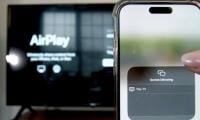The writer is an independent education researcher and consultant. She has a PhD in Education from Michigan State University.
Stanley Kubrick’s 1968 cinematic masterpiece, ‘2001: A Space Odyssey’ (based on Arthur C Clarke’s short story ‘The Sentinel’) imagined the intervening years as filled with technological progress.
The year 2001 was going to see space travel become as routine as a trans-Atlantic flight, machines becoming more human-like, video phones, general Artificial Intelligence, and contact with an alien intelligence. The film ends with the next great step in human evolution, where human beings evolve to become untethered from the restraints of their physical bodies and be reborn as the star child.
Meanwhile, here in reality we are still asking the rhetorical question, “Where’s my jetpack?” Like Kubrick’s vision of the future, more than 25 years after the birth of the public internet, our vision of the future of education has run into familiar obstacles: the cost of personal computing devices (computers, laptops, tablets, smart phones), cost and availability of high-speed Internet connectivity, availability of electricity and the availability of digital learning content.
While the cost of computing devices has come down over the decades, it still ranges between significant (developed countries) and prohibitive (developing countries), depending on country and community. The same applies to pre-requisite utilities like electricity supply and internet access. In this sense, the easiest problem to solve is the production of digital learning content – once made, it can be used by a hundred, a million or ten million students, at little to no additional cost. For Pakistani schools today, all of these present significant hurdles.
However, there is reason for cautious optimism that at least one of these challenges will become addressable in about a decade from now – the connectivity challenge. How so, you ask? The saviour, expected to arrive sometime around the year 2030, is the sixth generation of wireless communication technologies, or 6G.
Pakistan is currently using 4G technology, with reports of limited testing of 5G wireless technology by some wireless cellular service providers. Around the world, the roll-out of 5G wireless networks has just begun. Each new generation of wireless communication technologies has enabled faster data rates and enabled the widespread adoption of new services and applications. So, 3G technology enabled fast web access, which gave the world millions of apps and access to the web while on the move.
Like every successive technology, 4G upped speed, connected more devices within a service area and enabled high-quality audio and video streaming applications on our phones and gave us Netflix and video calling on the move. Now 5G is increasing speed by another factor of 100 and significantly reducing communication lag which will enable new interactive applications that require greater responsiveness – robotics, augmented reality (AR), virtual reality (VR), etc.
The faster speed of each new generation is enabled by using higher frequencies to transmit signals – higher frequencies enable sending more bits per second. The problem is that higher frequency signals have shorter range. This 5G deployment is already forcing service providers to put up visibly more cell towers than before, which significantly adds to deployment cost.
That is why service coverage remains clustered around densely populated areas. In Pakistan, in particular, service quality often degrades as one travels outward and reaches the edge of major cities. This leaves little hope for service coverage in villages and remote areas. So, besides even faster speeds, what does 6G promise that gives me hope for (finally) delivering broadband Internet connectivity to schools everywhere?
Activity around 6G is just kicking off now, and one of the phrases often used to describe its promise is “connecting the unconnected.” Although a lot of aspects of the technology still requires a lot of work, the idea is that 6G will finally be the wireless access technology that will break out of the confines of major population centers and provide ubiquitous broadband access at a reasonable cost by means of drones serving as airborne cell towers flying at around 20,000 meters, twice the altitude of commercial airliners! According to initial estimates, only a few dozen drones will be enough to provide service coverage in rural areas in the UK.
It makes you think; could a few dozen airborne platforms be the missing puzzle pieces to provide broadband internet connectivity to communities outside major cities and propel us a step towards better schools? What gives me hope is that deployment of 6G in Pakistan will not require large investments by the state, but the private sector. To the contrary, the Pakistan Telecom Authority will get to make money from auctioning off more spectrums!
This 6G technology could be one of the most significant steps towards bridging the digital divide separating urban and rural areas, and not just for education. It would finally enable social ventures to start tackling problems in the agricultural supply chain, retail, and healthcare and many more that have long plagued rural areas.
Covid-19 clearly exposed the digital divide in school and higher education sectors. Educational content developed to compensate for school closures was developed for distribution by television broadcasts, rather than the internet. The reason was that, while many have access to smartphones, communities hit hardest by school closures are also the least connected. And so, in Pakistan in the year 2020, an era where everything is on-demand, learning content (developed at great cost) can only reach its intended audience by means of broadcasts in a limited number of inflexible timeslots.
Communities in mountainous regions are not only disconnected from the internet, but also poorly connected to physical schools, due to lack of roads and difficult terrain. Here too, bridging the digital divide could help bridge the education divide. Coupled with suitable content, families in remote areas could finally have the option to home school their children. This would also make it easier to bring education to girls in these areas.
Solutions for other prerequisites are already making inroads. The cost of residential solar energy solutions is coming down every year. Smartphones, tablets and computers are available at a wider range of price points than ever and making their ways into more hands every day. The hardest problem of all remains connectivity and the next generation of wireless technologies could finally remove that obstacle.
For a positive local example that shows how connectivity and work-from-home have improved service delivery to historically underserved communities, let us consider the telemedicine services. In recent years. more than 50 percent of MBBS graduates in Pakistan have been women. In spite of the crushing shortage of doctors everywhere, many drop out of the workforce shortly after graduation, for a number of reasons – family pressures, child rearing responsibilities, unfavorable working conditions, etc.
However, in the last few years we have seen some local success stories of telemedicine services that have connected this large supply of qualified women doctors with the huge demand for their services in rural areas. With the assistance of a local nurse in simply equipped health centers in far-flung areas, many of those women doctors now work from home and serve those communities while maintaining flexible working hours. A major factor limiting expansion of telemedicine services is affordable broadband connectivity.
Now, 2030 is still a full decade away and I am not Pollyannish to believe that a sitting government today would move a finger to make another government, at least two election cycles away, look good. While the technical challenges are still being worked on, we should start planning ahead to avoid excessive delays. This means tracking progress on 6G and its spectrum requirements and looking ahead towards freeing it up from existing users (if any) for a timely auction.
Lack of foresight, planning and policy formulation are the reasons many technologies have been late arrivals in Pakistan – like 3G, hybrid and electric vehicles. Timely adoption of the next generation of wireless communication could remove a major structural roadblock to development that has made us write off rural areas.
While I may not live long enough to see the next stage of human evolution imagined by Kubrick, I still hope to see the next generation of wireless technologies democratize the delivery of education and maybe even get my jetpack yet.
India uses Afghanistan as a backstage area to carry out terrorist attacks against Pakistan
Another report by the Pakistan Institute of Peace Studies states that 78 per cent of attacks have been carried out by...
Pakistan stands at the forefront of this crisis, generating a staggering 3.3 million tonnes of plastic waste annually
Today, a total of 11,000 children are attending Daanish schools in Punjab
The emotional instability of parents inculcates a range of psychological issues in children
The current way of dealing with the environment and climate change is no longer adequate







